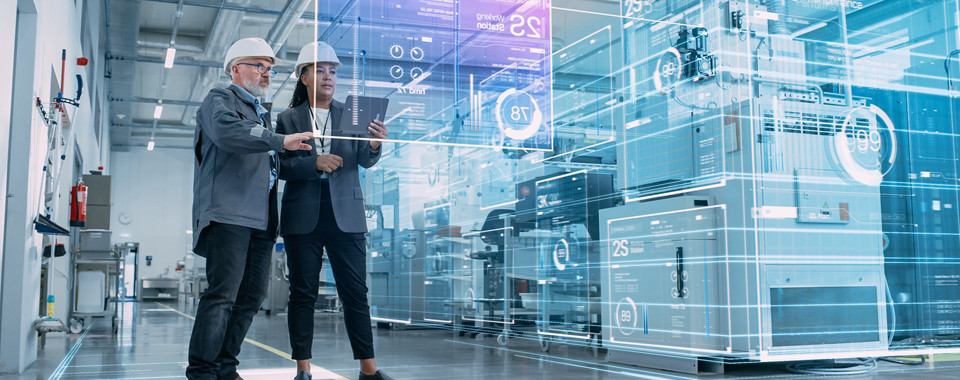When we talk about artificial intelligence, who doesn't immediately think of ChatGPT? But AI is more than just a generative language model. In industrial practice – for example, in production planning, manufacturing optimization, or in the control of value creation processes – a wide variety of AI methods are used. In our Aha! series, we'll look at one term from the world of AI – explained in a clear manner and with applications from everyday production. We'll start with machine learning and a practical example from everyday production: replenishment times.
Especially in the world of production, it's usually optimization algorithms, heuristic rules, simulation-based methods, or classic machine learning models that create concrete added value – whether by reducing lead times, improving resource utilization, or enabling more sound planning decisions.
A statement from the analyst firm Gartner sums it up:
"AI does not revolve around GenAI" – Artificial intelligence isn't just about generative models.
Gartner defines artificial intelligence as the application of advanced, logic-based analytical techniques. It encompasses a broad spectrum of technologies such as rule-based decision models, computer vision, and predictive analytics – all with high potential for industrial applications. Machine learning (ML) is also part of this. And with that, the stage is set for aha moments surrounding the problem-solver for replenishment times.
Machine Learning is everywhere
Machine Learning is a subfield of artificial intelligence. It focuses on training computers to learn from data and experience and to continually improve. Algorithms are trained to find patterns and correlations in large data sets. These analyses form the foundation for well-informed decisions and reliable predictions. The more data is available, the more precise the results become.
Where is AI hiding in ML?
Machine learning algorithms not only enable AI to process data but also use it and learn from it – all without any additional programming. Artificial intelligence is the mother of all underlying subsets of machine learning. Among these are neural networks, consisting of artificial neurons that recognize complex patterns. Deep learning, which involves many layers of neural networks and large amounts of complex and diverse data, is also a component.
The data that machine learning accesses is found in our homes, in our shopping carts, in our entertainment media, in our healthcare systems – and in production.
The results of machine learning provide a precise basis for INFORM's optimization algorithms. Our software calculates the "optimal result," which is even more accurate.
Forgotten data, big impact: ML in production
There is often a gap between confirmed and actual delivery dates for orders. Goods are delivered too early or too late – the delivery and replenishment times stored in the master data are unreliable. The reason: They are static and poorly maintained. This means that machine and plant manufacturers are missing out on a lot of optimization potential.
They can address this with a special machine learning application from INFORM that realistically calculates replenishment times. They serve as the basis for optimizing production planning.
The application uses ERP systems as a data source and applies machine learning. "Every machine manufacturer has an ERP system. We even have a history of orders," explains Markus Günther, Head of Production Sales at INFORM. "Every order contains information about the order date, the supplier's confirmation, and the delivery date. Many simply forget the data once the order arrives." However, it is very well maintained. The INFORM developers have evaluated extensive historical data.
XGBoost – what is it?
The experts rely on XGBoost. This is a powerful machine learning method that optimizes prediction performance through intelligent learning of a multitude of decision trees.
A complex machine learning model is trained based on individual customer data – consisting of numerous decision trees with varying properties.
During training, the model parameters are fine-tuned. This enables the Final learned model to generate the best possible predictions.
Customers' replenishment times could be forecasted much more accurately – estimation errors were reduced by up to more than 40%. This means significantly greater planning reliability for production planners: They can schedule more realistically, identify bottlenecks early, and thus reduce buffer times and unplanned downtimes. This results in greater adherence to deadlines, more stable production processes, and optimized resource utilization. AHA!
Are you interested in optimizing your replenishment times and thus your production with the help of AI? Then please get in touch.
PS: To be continued with AHA! moments on the topic of chatbots!








